 W
WAcaryochloris marina is a symbiotic species of the phylum Cyanobacteria that produces chlorophyll d, allowing it to use far-red light, at 770 nm wavelength.
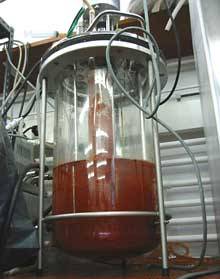 W
WAnammox, an abbreviation for anaerobic ammonium oxidation, is a globally important microbial process of the nitrogen cycle that takes place in many natural environments. The bacteria mediating this process were identified in 1999, and were a great surprise for the scientific community. In the anammox reaction, nitrite and ammonium ions are converted directly into diatomic nitrogen and water.
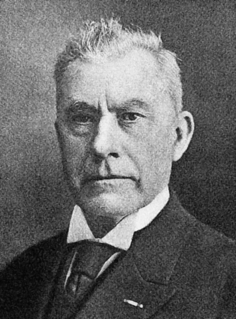 W
WMartinus Willem Beijerinck was a Dutch microbiologist and botanist who was one of the founders of virology and environmental microbiology. He is credited with the discovery of viruses, which he called Contagium vivum fluidum.
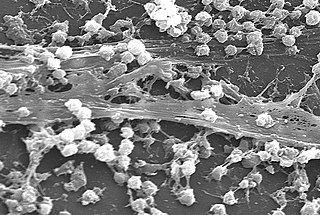 W
WA biofilm comprises any syntrophic consortium of microorganisms in which cells stick to each other and often also to a surface. These adherent cells become embedded within a slimy extracellular matrix that is composed of extracellular polymeric substances (EPSs). The cells within the biofilm produce the EPS components, which are typically a polymeric conglomeration of extracellular polysaccharides, proteins, lipids and DNA. Because they have three-dimensional structure and represent a community lifestyle for microorganisms, they have been metaphorically described as "cities for microbes".
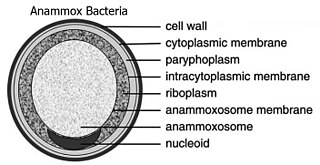 W
W"Candidatus Brocadia anammoxidans" is a bacterial member of the phylum Planctomycetes and therefore lacks peptidoglycan in its cell wall, and has a compartmentalized cytoplasm.
 W
WCable bacteria are filamentous bacteria that conduct electricity across distances over 1 cm in sediment and groundwater aquifers. Cable bacteria allow for long distance electron transport, which connects electron donors to electron acceptors, connecting previously separated oxidation and reduction reactions. Cable bacteria couple the reduction of oxygen or nitrate at the sediment's surface to the oxidation of sulfide in the deeper, anoxic, sediment layers.
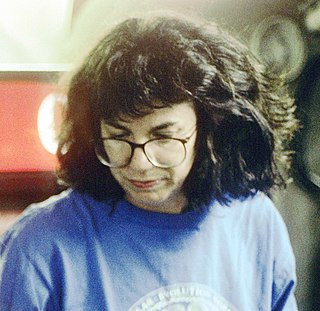 W
WColleen Cavanaugh is an American academic microbiologist best known for her studies of hydrothermal vent ecosystems. As of 2016, she is the Edward C. Jeffrey Professor of Biology in the Department of Organismic and Evolutionary Biology at Harvard University and is affiliated with the Rowland Institute. Cavanaugh was the first to propose that the deep-sea giant tube worm, Riftia pachyptila, obtains its food from bacteria living within its cells, an insight which she had as a graduate student at Harvard. Significantly, she made the connection that these chemoautotrophic bacteria were able to play this role through their use of chemosynthesis, the biological oxidation of inorganic compounds to synthesize organic matter from very simple carbon-containing molecules, thus allowing organisms such as the bacteria to exist in deep ocean without sunlight.
 W
WThe Center for Biofilm Engineering (CBE) is an interdisciplinary research, education, and technology transfer institution located on the central campus of Montana State University in Bozeman, Montana. The center was founded in April 1990 as the Center for Interfacial Microbial Process Engineering with a grant from the Engineering Research Centers (ERC) program of the National Science Foundation (NSF). The CBE integrates faculty from multiple university departments to lead multidisciplinary research teams—including graduate and undergraduate students—to advance fundamental biofilm knowledge, develop beneficial uses for microbial biofilms, and find solutions to industrially relevant biofilm problems. The center tackles biofilm issues including chronic wounds, bioremediation, and microbial corrosion through cross-disciplinary research and education among engineers, microbiologists and industry.
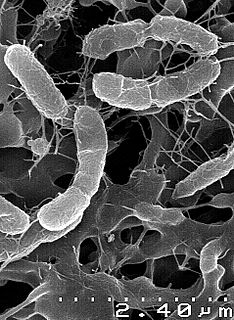 W
WIn biochemistry, chemosynthesis is the biological conversion of one or more carbon-containing molecules and nutrients into organic matter using the oxidation of inorganic compounds or ferrous ions as a source of energy, rather than sunlight, as in photosynthesis. Chemoautotrophs, organisms that obtain carbon from carbon dioxide through chemosynthesis, are phylogenetically diverse. Groups that include conspicuous or biogeochemically-important taxa include the sulfur-oxidizing gamma and epsilon proteobacteria, the Aquificae, the methanogenic archaea and the neutrophilic iron-oxidizing bacteria.
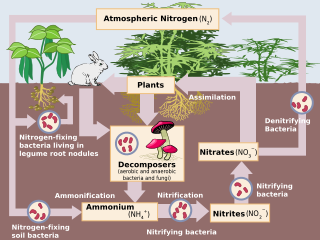 W
WDenitrification is a microbially facilitated process where nitrate (NO3−) is reduced and ultimately produces molecular nitrogen (N2) through a series of intermediate gaseous nitrogen oxide products. Facultative anaerobic bacteria perform denitrification as a type of respiration that reduces oxidized forms of nitrogen in response to the oxidation of an electron donor such as organic matter. The preferred nitrogen electron acceptors in order of most to least thermodynamically favorable include nitrate (NO3−), nitrite (NO2−), nitric oxide (NO), nitrous oxide (N2O) finally resulting in the production of dinitrogen (N2) completing the nitrogen cycle. Denitrifying microbes require a very low oxygen concentration of less than 10%, as well as organic C for energy. Since denitrification can remove NO3−, reducing its leaching to groundwater, it can be strategically used to treat sewage or animal residues of high nitrogen content. Denitrification can leak N2O, which is an ozone-depleting substance and a greenhouse gas that can have a considerable influence on global warming.
 W
WAn endosymbiont or endobiont is any organism that lives within the body or cells of another organism most often, though not always, in a mutualistic relationship. (The term endosymbiosis is from the Greek: ἔνδον endon "within", σύν syn "together" and βίωσις biosis "living".) Examples are nitrogen-fixing bacteria, which live in the root nodules of legumes; single-cell algae inside reef-building corals, and bacterial endosymbionts that provide essential nutrients to about 10–15% of insects.
 W
WAn extremophile is an organism with optimal growth in environmental conditions considered extreme in that it is challenging for a carbon-based life form, such as all known life on Earth, to survive.
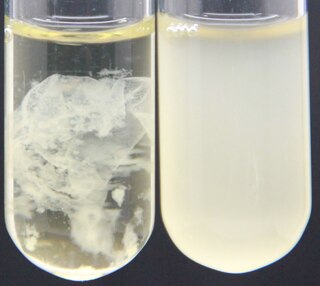 W
WA floc is a type of microbial aggregate that may be contrasted with biofilms and granules, or else considered a specialized type of biofilm. Flocs appear as cloudy suspensions of cells floating in water, rather than attached to and growing on a surface like most biofilms. The floc typically is held together by a matrix of extracellular polymeric substance (EPS), which may contain variable amounts of polysaccharide, protein, and other biopolymers. The formation and the properties of flocs may affect the performance of industrial water treatment bioreactors such as activated sludge systems where the flocs form a sludge blanket.
 W
WGFAJ-1 is a strain of rod-shaped bacteria in the family Halomonadaceae. It is an extremophile that was isolated from the hypersaline and alkaline Mono Lake in eastern California by geobiologist Felisa Wolfe-Simon, a NASA research fellow in residence at the US Geological Survey. In a 2010 Science journal publication, the authors claimed that the microbe, when starved of phosphorus, is capable of substituting arsenic for a small percentage of its phosphorus to sustain its growth. Immediately after publication, other microbiologists and biochemists expressed doubt about this claim which was robustly criticized in the scientific community. Subsequent independent studies published in 2012 found no detectable arsenate in the DNA of GFAJ-1, refuted the claim, and demonstrated that GFAJ-1 is simply an arsenate-resistant, phosphate-dependent organism.
 W
WGut microbiota, gut flora, or microbiome are the microorganisms including bacteria, archaea and fungi that live in the digestive tracts of humans and other animals including insects. The gastrointestinal metagenome is the aggregate of all the genomes of gut microbiota. The gut is the main location of human microbiota.
 W
WThe gut–brain axis is the biochemical signaling that takes place between the gastrointestinal tract and the central nervous system (CNS). The term "gut–brain axis" is occasionally used to refer to the role of the gut flora in the interplay as well, whereas the term "microbiota–gut–brain axis" explicitly includes the role of gut flora in the biochemical signaling events that take place between the GI tract and CNS.
 W
WThe human microbiome is the aggregate of all microbiota that reside on or within human tissues and biofluids along with the corresponding anatomical sites in which they reside, including the skin, mammary glands, placenta, seminal fluid, uterus, ovarian follicles, lung, saliva, oral mucosa, conjunctiva, biliary tract, and gastrointestinal tract. Types of human microbiota include bacteria, archaea, fungi, protists and viruses. Though micro-animals can also live on the human body, they are typically excluded from this definition. In the context of genomics, the term human microbiome is sometimes used to refer to the collective genomes of resident microorganisms; however, the term human metagenome has the same meaning.
 W
WThe Human Microbiome Project (HMP) was a United States National Institutes of Health (NIH) research initiative to improve understanding of the microbial flora involved in human health and disease. Launched in 2007, the first phase (HMP1) focused on identifying and characterizing human microbial flora. The second phase, known as the Integrative Human Microbiome Project (iHMP) launched in 2014 with the aim of generating resources to characterize the microbiome and elucidating the roles of microbes in health and disease states. The program received $170 million in funding by the NIH Common Fund from 2007 to 2016.
 W
WMetagenomics is the study of genetic material recovered directly from environmental samples. The broad field may also be referred to as environmental genomics, ecogenomics or community genomics.
 W
WMicrobial ecology is the ecology of microorganisms: their relationship with one another and with their environment. It concerns the three major domains of life—Eukaryota, Archaea, and Bacteria—as well as viruses.
 W
WThe microbial loop describes a trophic pathway where, in aquatic systems, dissolved organic carbon (DOC) is returned to higher trophic levels via its incorporation into bacterial biomass, and then coupled with the classic food chain formed by phytoplankton-zooplankton-nekton. In soil systems, the microbial loop refers to soil carbon. The term microbial loop was coined by Farooq Azam, Tom Fenchel et al. in 1983 to include the role played by bacteria in the carbon and nutrient cycles of the marine environment.
 W
WMicrobiology of decomposition is the study of all microorganisms involved in decomposition, the chemical and physical processes during which organic matter is broken down and reduced to its original elements.
 W
WVasily Leonidovich Omelianski was a Russian microbiologist and author of the first original Russian text book on microbiology. He was the only student of Sergei Winogradsky and succeeded him as head of the department of General Microbiology at the Institute of Experimental Medicine in Saint Petersburg.
 W
WPelagibacter, with the single species P. ubique, was isolated in 2002 and given a specific name, although it has not yet been described as required by the bacteriological code. It is an abundant member of the SAR11 clade in the phylum Alphaproteobacteria. SAR11 members are highly dominant organisms found in both salt and fresh water worldwide – possibly the most numerous bacterium in the world, and were originally known only from their rRNA genes, which were first identified in environmental samples from the Sargasso Sea in 1990 by Stephen Giovannoni's laboratory in the Department of Microbiology at Oregon State University and later found in oceans worldwide. P. ubique and its relatives may be the most abundant organisms in the ocean, and quite possibly the most abundant bacteria in the entire world. It can make up about 25% of all microbial plankton cells, and in the summer they may account for approximately half the cells present in temperate ocean surface water. The total abundance of P. ubique and relatives is estimated to be about 2 × 1028 microbes.
 W
WPhototrophic biofilms occur on contact surfaces in a range of terrestrial and aquatic environments. Phototrophic biofilms can best be described as surface attached microbial communities mainly driven by light as the energy source with phototrophic organisms clearly present. Eukaryotic algae and cyanobacteria generate energy and reduce carbon dioxide, providing organic substrates and oxygen. The photosynthetic activity fuels processes and conversions in the total biofilm community, including the heterotrophic fraction.
 W
WPlanctomycetes are a phylum of widely distributed Bacteria, occurring in both aquatic and terrestrial habitats. They play a considerable role in the global carbon and nitrogen cycles, with many species of this phylum capable of performing anaerobic ammonium oxidation, also known as anammox. Many Planctomycetes also often associate with other organisms such as macroalgae and marine sponges.
 W
WProchlorococcus is a genus of very small (0.6 µm) marine cyanobacteria with an unusual pigmentation. These bacteria belong to the photosynthetic picoplankton and are probably the most abundant photosynthetic organism on Earth. Prochlorococcus microbes are among the major primary producers in the ocean, responsible for a large percentage of the photosynthetic production of oxygen. Analysis of the genome sequences of 12 Prochlorococcus strains show that 1,100 genes are common to all strains, and the average genome size is about 2,000 genes. In contrast, eukaryotic algae have over 10,000 genes.
 W
WThe term skin flora refers to the microorganisms which reside on the skin, typically human skin.
 W
WSolemyidae is a family of saltwater clams, marine protobranch bivalve mollusks in the order Solemyida.
 W
WSulfate-reducing microorganisms (SRM) or sulfate-reducing prokaryotes (SRP) are a group composed of sulfate-reducing bacteria (SRB) and sulfate-reducing archaea (SRA), both of which can perform anaerobic respiration utilizing sulfate (SO42–) as terminal electron acceptor, reducing it to hydrogen sulfide (H2S). Therefore, these sulfidogenic microorganisms "breathe" sulfate rather than molecular oxygen (O2), which is the terminal electron acceptor reduced to water (H2O) in aerobic respiration.
 W
WViral metagenomics is the study of viral genetic material sourced directly from the environment rather than from a host or natural reservoir. The goal is to ascertain the viral diversity in the environment that is often missed in studies targeting specific potential reservoirs. It reveals important information on virus evolution and the genetic diversity of the viral community without the need for isolating viral species and cultivating them in the laboratory. With the new techniques available that exploit next-generation sequencing (NGS), it is possible to study the virome of some ecosystems, even if the analysis still has some issues, in particular the lack of universal markers. Some of the first metagenomic studies of viruses were done with ocean samples, and revealed that most of the sequences of DNA and RNA viruses had no matches in databases. Subsequently, some studies about the soil virome were performed with a particular interest on bacteriophages, and it was discovered that there are almost the same number of viruses and bacteria. This approach has created improvements in molecular epidemiology and accelerated the discovery of novel viruses.
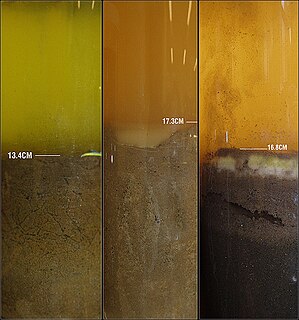 W
WThe Winogradsky column is a simple device for culturing a large diversity of microorganisms. Invented in the 1880s by Sergei Winogradsky, the device is a column of pond mud and water mixed with a carbon source such as newspaper, blackened marshmallows or egg-shells, and a sulfur source such as gypsum or egg yolk. Incubating the column in sunlight for months results in an aerobic/anaerobic gradient as well as a sulfide gradient. These two gradients promote the growth of different microorganisms such as Clostridium, Desulfovibrio, Chlorobium, Chromatium, Rhodomicrobium, and Beggiatoa, as well as many other species of bacteria, cyanobacteria, and algae.
 W
WSergei Nikolaievich Winogradsky was a Russian microbiologist, ecologist and soil scientist who pioneered the cycle-of-life concept.